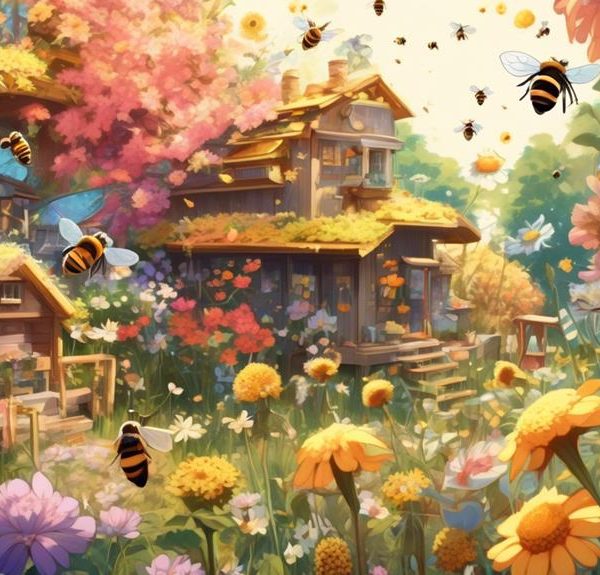Highlighting key insights, discover if Danish oil is a safe and effective treatment for your mason bee house.

Can I Use Danish Oil on a Mason Bee House?
Just like a fingerprint to a detective, the choice of finish can reveal a lot about your approach to beekeeping. If you're considering Danish oil for your mason bee house, there are several factors you'll need to weigh up.
This oil, known for its ability to penetrate deeply into wood, may seem like an attractive option for enhancing the durability of your bee house. However, it's important to consider all angles before making a decision, especially when the wellbeing of your tiny tenants is at stake.
Ready to explore the pros and cons?
Key Takeaways
- Danish oil is a popular choice for finishing mason bee houses due to its ability to enhance the natural beauty of wood and provide a strong and water-resistant finish.
- However, Danish oil may contain chemicals that could be harmful to bees, so it is important to ensure that the oil is completely dry before allowing bees to come into contact with it.
- The fumes from Danish oil can disorient bees and decrease their productivity, so it is best to apply the oil when bees are not active, such as in late autumn or winter.
- If concerned about the potential harm to bees, alternatives such as raw linseed oil, tung oil, beeswax, or shellac can be considered, each with their own advantages and disadvantages.
Understanding Danish Oil
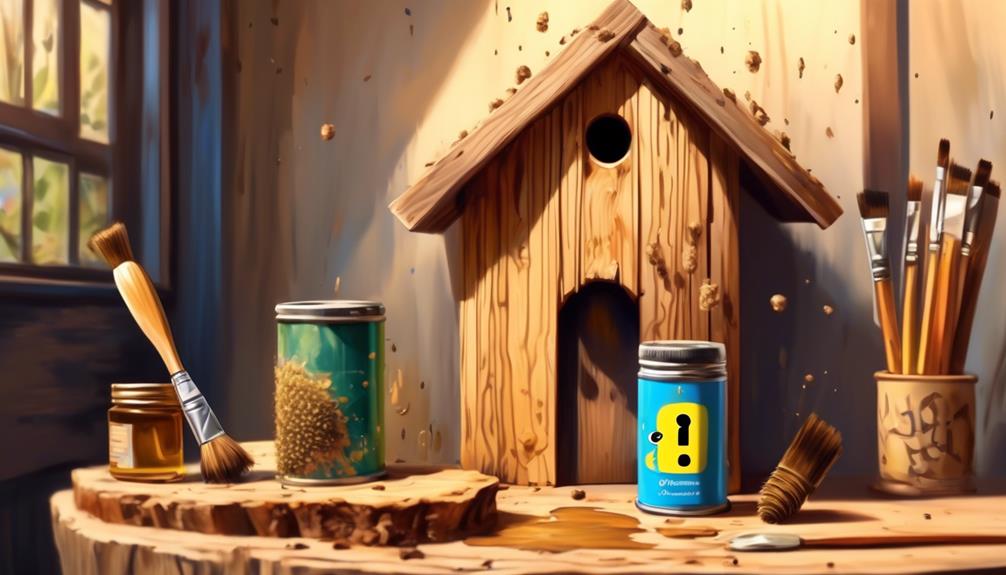
To properly use Danish oil on your mason bee house, you first need to understand what it's and its unique characteristics. Danish oil isn't actually oil, but a mixture of oil, varnish, and thinner. It's loved by many woodworkers for its easy application and beautiful finish.
Now, let's delve into its unique characteristics. Danish oil penetrates deep into the wood, enhancing its natural beauty while providing a strong, hard-wearing finish. It's water-resistant, making it ideal for a mason bee house that's exposed to outdoor elements. It also dries quickly, so you don't have to wait forever to see the fruits of your labor.
Applying Danish oil is a breeze. You can use a brush or a cloth, and it doesn't require any special skills. Just remember, less is more. Don't slather it on; a thin, even coat is all you need. It's also important to give it ample drying time.
In short, Danish oil can be an excellent choice for your mason bee house. Not only will it protect the wood, but it'll also enhance its natural beauty.
Pros of Using Danish Oil
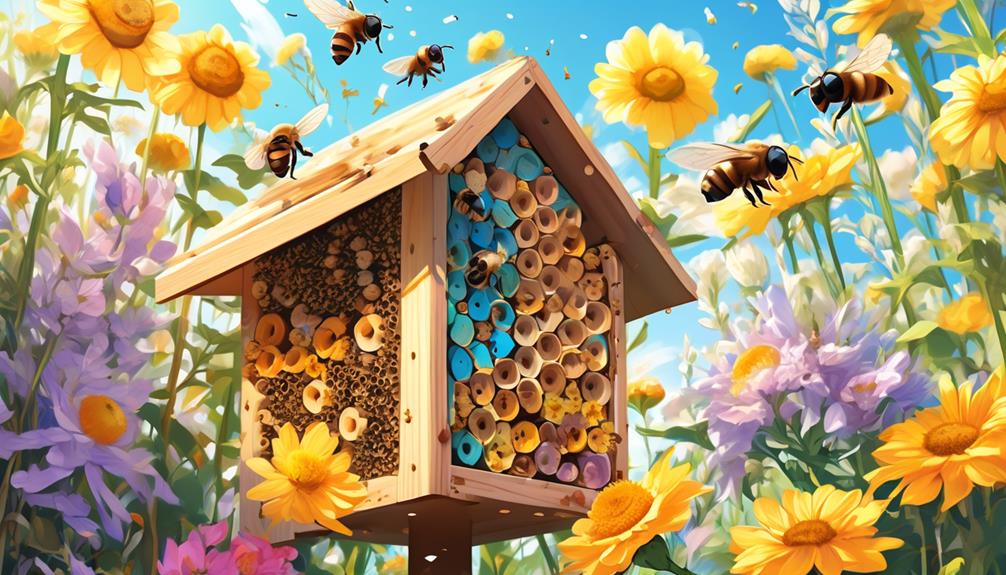
When you choose Danish oil for your mason bee house, you're investing in several key benefits that can make your woodworking project shine. Danish oil, a blend of linseed oil and varnish, penetrates deep into the wood, enhancing its natural beauty. It brings out the grain while providing a warm, rich glow that's hard to beat.
One of the biggest pros to using Danish oil is its protective qualities. It forms a hard-wearing, water-resistant finish that defends your bee house against the elements. Whether it's rain, sun, or snow, Danish oil has got you covered.
Moreover, Danish oil is easy to apply and forgiving of mistakes. It won't leave streaks or brush marks like some finishes. If you're not entirely happy with the initial application, you can simply add another coat.
It's also easy to maintain. When the finish starts to wear thin, you can reapply the oil without having to sand down the previous layer.
Cons of Using Danish Oil
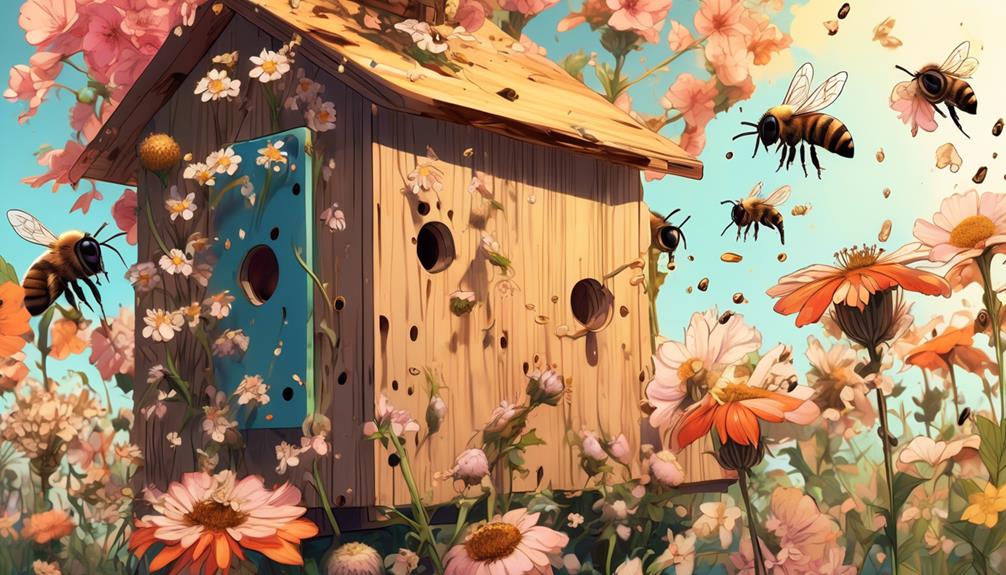
However, despite its advantages, there are some drawbacks to using Danish oil that you should consider. One of the main concerns is that Danish oil may not be entirely harmless to bees. It contains chemicals that, while beneficial for wood preservation, can be toxic to these industrious pollinators. While the oil does dry and cure over time, residual toxins might still linger and potentially affect the bees.
Another downside is that Danish oil takes a while to dry properly. It's not a 'quick fix' and requires your patience. If you're in a rush to get your mason bee house ready, this may not be your best option.
Lastly, Danish oil may darken the wood significantly. This might not be to your aesthetic taste and could potentially affect the attractiveness of the bee house to the bees.
Here's a summary:
Drawback | Description |
|---|---|
Possible toxicity to bees | Residual chemicals in the oil may harm bees |
Drying time | The oil takes a long time to dry |
Darkening wood | Danish oil can significantly darken the wood |
Weigh these cons carefully against the pros before making your decision.
Impact on Mason Bees
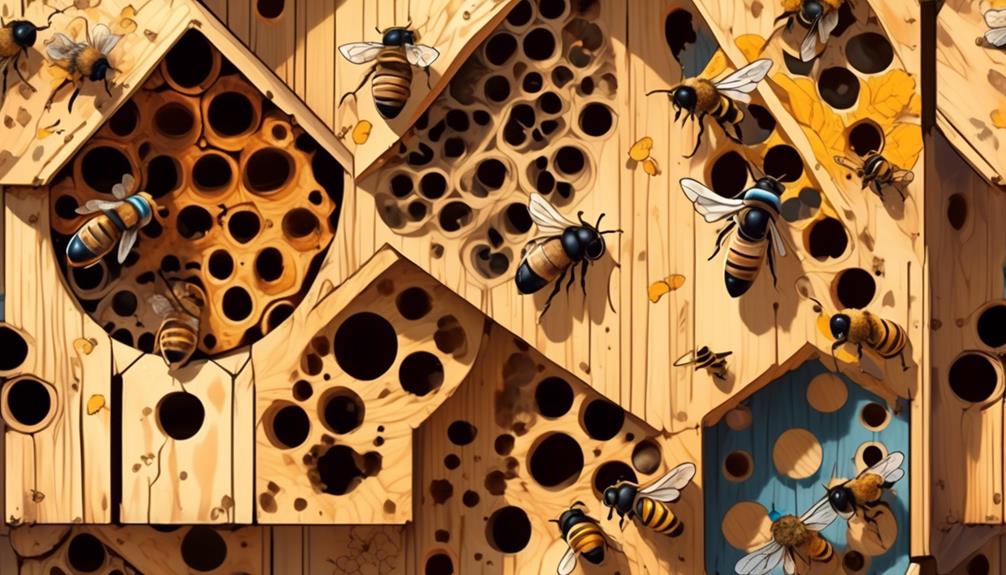
Understanding the impact of Danish oil on mason bees is crucial for your decision-making process, as their health and productivity directly influence the success of your bee house. Danish oil, while giving a polished, weather-resistant finish to the wood, can potentially harm your mason bees. It's vital to comprehend that bees are sensitive to chemicals, and Danish oil is no exception.
If you apply the oil and the bees come into direct contact with it before it's completely dry, it may have detrimental effects. The bees could become coated in the oil, making it challenging for them to fly or even survive.
Moreover, the fumes from the oil can disorient the bees, leading to a decrease in their productivity. They might struggle to return to the hive, resulting in a decrease in pollination and thus, negatively affecting your garden's health.
To ensure the safety of your bees, it's best to apply Danish oil in the late autumn or winter when the bees aren't active. This allows the oil to dry completely before the bees return. Always remember, the welfare of your bees should be your top priority.
Alternatives to Danish Oil
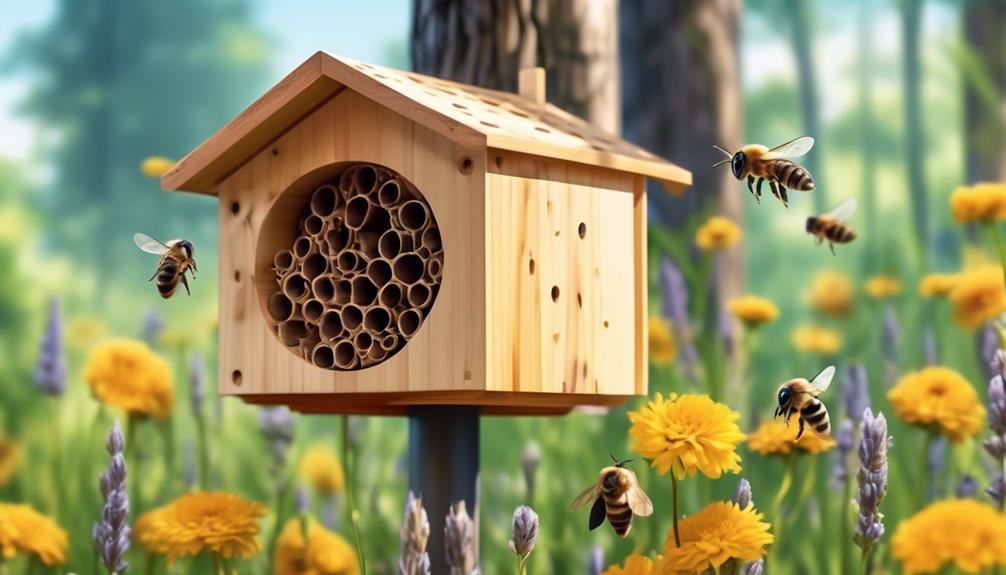
If you're wary about the potential hazards of using Danish oil on your mason bee house, there are several safer alternatives you might consider. These alternatives are not only beneficial for the bees but also environmentally friendly.
Here's a table to help you understand better:
Alternative | Pros | Cons |
|---|---|---|
Raw Linseed Oil | Non-toxic, natural, safe for bees | Takes a long time to dry |
Tung Oil | Durable, water-resistant | Requires several coats, may darken wood |
Beeswax | Easy to apply, natural, safe for bees | Not as durable as other options |
Shellac | Fast-drying, glossy finish | Not as durable, needs regular maintenance |
No Finish | Most natural option, no work required | Wood is not protected, may weather faster |
Each of these alternatives has its own sets of pros and cons. Raw linseed oil, for example, is a natural product safe for bees but takes a while to dry. Tung oil offers durability and water-resistance but may darken your wood over time. Beeswax is easy to apply and safe for bees, but not as durable as other options.
Remember that the health and well-being of your mason bees is the top priority. Choose a finish that's safe for them and suitable for your needs.
Conclusion
In conclusion, you can use Danish oil on your Mason bee house. However, consider the pros and cons.
While it adds richness to the wood and offers protection, it may be harmful if the bees ingest it.
Always consider your bees' health first. If in doubt, opt for safer alternatives like linseed oil or untreated, naturally weather-resistant wood.
Your bees' safety and comfort should always be your priority.


